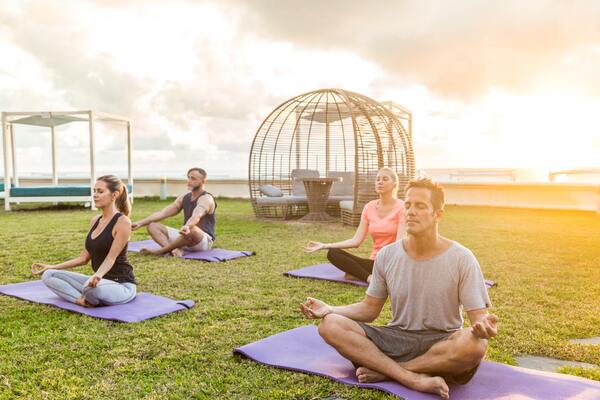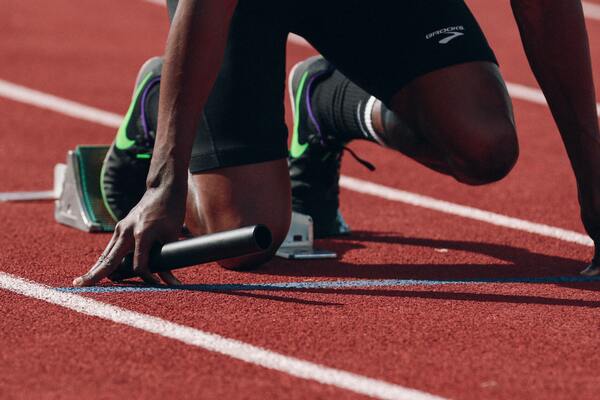Running can cause aches and pains, but regular yoga practice can help you manage them and enhance your overall performance. In order to improve performance and recovery, it is generally preferable to run first and do yoga second. Read on and learn why it is better to do yoga after running.
Yoga Before Or After Running
After your run is the ideal time to practice longer sessions of yoga. This will enable you to stay relaxed for longer, allowing your muscles to recover and allowing you to get a good night’s sleep.
Yoga is best practiced after a run, even though it may seem like a good idea to do it first.
However, if you want to practice yoga to warm up before a run, it would be best to use dynamic yoga moves rather than poses that call for you to hold them for an extended period of time.
The muscles would stretch and relax if you had to do a yoga session where you held the pose for a while. Your muscles act like springs while you’re running; they’re tight and assist in moving you forward. Your running economy will decrease and you risk injury if the muscles are stretched and relaxed.
After your run, practicing yoga will aid in recovery because it eases muscle tension, reduces pain, and restores range of motion.
(Read more: How Often Should You Do Yoga?)
Why Is It Better To Run Before Yoga
There are several benefits to running before yoga. The parasympathetic nervous system, which aids in body rest, is stimulated by the deep breathing and poses used in yoga. Your heart and respiration rates will slow down, as a result, allowing your body and mind to unwind.
After practicing yoga, going for a run will cause your body to transition from a relaxed state to a stressed state. As a result of chemical reactions brought on by this slight shock to the body, your running performance may be impacted.
The muscles can fully warm up by running before practicing yoga. This will enable you to practice yoga while positioning your body in deeper positions. The risk of injury will also be lower when you transition from a bending position into a twisting or lunging pose.

Benefits Of Doing Yoga After Running
Even though your initial instinct after finishing a sweat-dripping cardio workout or a run may be to down a full bottle of water or sports drink, take a shower, and then kick back and relax, spend some time rolling out your yoga mat and doing a few poses can provide a number of mental and physical benefits, including the following:
Doing Yoga Is A Great Cool-down After Cardio
After cardio, practicing yoga helps you bring your heart rate and respiration rate back down. Your heart beats much faster and harder than at rest when you run, cycle, swim, row, or engage in any other form of cardio to meet the oxygen needs of your working muscles.
Doing Yoga After A Workout Can Reduce Muscle Soreness
Yoga as a cool down after cardio reduces your heart rate more gradually while still perfusing your muscles with blood. Bringing healing nutrients and oxygen to the area of soreness, this aids in the removal of metabolic waste products from strenuous exercise.
In fact, studies show that incorporating yoga into your workout routine can reduce DOMS.
Doing Yoga After A Workout Can Increase Flexibility
Many yoga poses concentrate on lengthening and stretching the muscles and connective tissues around a joint. In this manner, flexibility has been linked to yoga.
It is best to practice yoga after working out because holding yoga poses are most similar to static stretching. Yoga before a workout may affect how well you perform because static stretching has been shown to momentarily lower strength output.
Ideally, your warmup routine should involve dynamic stretching and your cool-down should focus on static stretches such as yoga poses.
Doing Yoga After A Workout Boosts Well-being
Yoga has been demonstrated to enhance mood, lessen depressive symptoms, reduce stress and anxiety, and foster a sense of general well-being.
When you practice yoga as part of your cool-down from a challenging workout, you can reflect on your workout, connect with your breath and body, calm your mind, center your thoughts, and approach the rest of the day with a positive attitude.
Tips For Yoga
Resist The Urge To Compete
To master the different poses in yoga, you need time and patience. Contrarily, you can compete against other runners when you run, which challenges you. Although the person on the mat next to you in the yoga class may make the pose appear simple, they have probably been practicing yoga for longer.
Adjust Your Yoga Practice To Your Running Season
Examine your running schedule and match the types of yoga you’ll be doing to your running regimen. Consider including some restorative yoga sessions in your routine if you’re going to be engaging in high-intensity training for a few weeks prior to a marathon.
Consider incorporating a more difficult form of yoga, such as Vinyasa or Ashtanga yoga—also known as the military of yoga—during the off-season when you may be doing low-intensity runs.
Ashtanga yoga is also known as the “yoga of the warriors.” Power yoga is fast-paced, has some inventive moves, and is sure to raise your heart rate.
Choose Dynamic Yoga Movements Over Long Holds
Every runner strives to improve their running economy because it is crucial. A small study that was conducted revealed that runners who were less flexible had better running economies.
What To Do Before Going On A Run
In addition to high-intensity running sprint intervals, you can perform some dynamic stretches prior to a run. High-intensity warm-ups have been shown to enhance physiological parameters and performance when done before running.
Does this imply that running is bad for yoga? Yoga is not bad for runners as long as it is practiced at the proper time when it aids in post-run recovery, removes soft tissue restrictions, and promotes down-regulation. Yoga is a common recovery technique for competitive long-distance runners.
Conclusion
By far, practicing yoga after running will help you run better and help you regain full mobility. The full yoga session should be saved for after the running session, though you can still use dynamic stretching as part of your warm-up.
